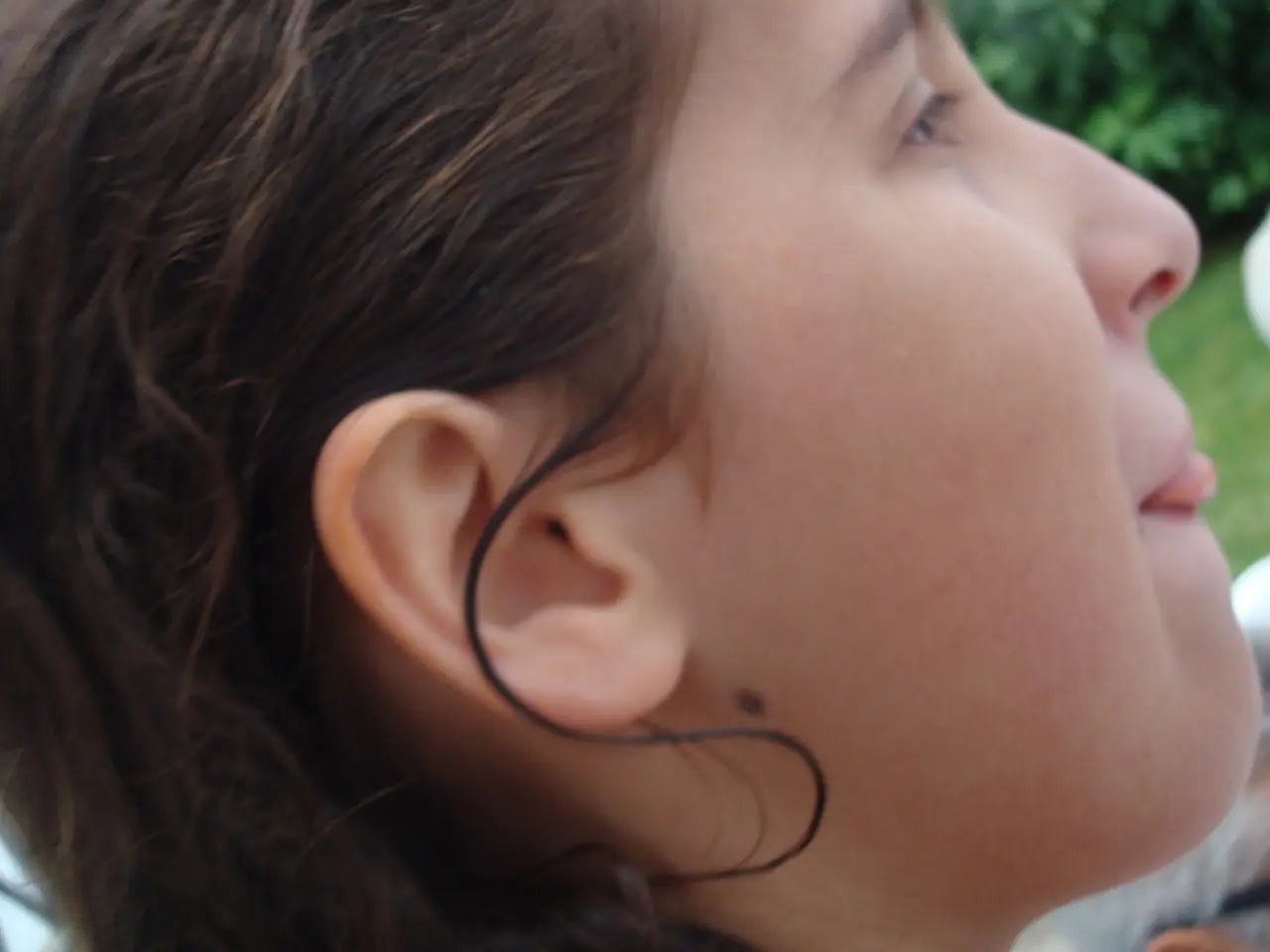New moles appearing on your skin: potential causes and symptoms to watch out for
In the realm of skin health, the appearance of new moles in adulthood can be a cause for concern. Understanding the common causes and the importance of monitoring these changes is crucial.
Moles, skin growths that develop due to an overgrowth of melanocytes, pigment-producing cells, are relatively common. However, a new mole or sudden changes to existing moles in an adult can be a sign of melanoma, a type of skin cancer.
The most common causes for new moles in adulthood are UV sun exposure, hormonal influences, and genetics. UV radiation from the sun can trigger the formation of new moles or cause existing moles to darken. Excessive sunlight or sunburns are known to increase the likelihood of new mole development and may contribute to skin damage.
Hormonal fluctuations during adulthood, such as those occurring during pregnancy, menopause, or puberty, can lead to new moles forming or changes in existing moles. These hormones can influence melanocyte activity, which produces pigment in the skin.
A genetic predisposition can make some individuals more likely to develop moles throughout life, including new ones in adulthood.
It is important to note that while many new moles in adulthood are harmless and related to the above factors, vigilance is recommended to rule out malignancy. Any new mole appearing after age 30 should be monitored carefully. New moles can sometimes be age-related but could also signal underlying skin issues, including melanoma.
Atypical moles, or dysplastic nevi, can develop anywhere on the body and usually appear larger than other mole types, with an uneven border and varying colour and texture. It's important to check areas such as the nails, feet, and hands as melanomas can also arise in these locations.
If a new mole arises or a person notices changes to their existing moles, they should visit a doctor or dermatologist for checks. Having a congenital mole, especially a large one, can increase a person's risk of developing melanoma.
Common moles typically have a round, symmetrical appearance with a smooth surface and a defined border, and usually appear on areas of the skin exposed to sunlight. Atypical moles may contain multiple colours such as pink, red, tan, and dark brown.
Some atypical moles may become cancerous, but most do not develop into melanomas. Regular skin checks, especially for those with a family history of atypical moles or melanoma, are essential in early detection and treatment.
In summary, while the appearance of new moles in adulthood is often harmless, it's essential to be vigilant and consult a healthcare professional if any changes are noticed. Regular skin checks can help ensure early detection and treatment of any potential issues.
- Beyond skin cancer, other medical-conditions such as multiple sclerosis, type 1 diabetes, hepatitis, and psoriasis can also pose significant health challenges.
- In the realm of mental health, depression is a common condition that affects millions worldwide, often requiring predictive strategies for management and treatment.
- Dry skin is a common issue in health-and-wellness, often experienced during winter months or due to certain medications, exacerbating concerns over skin care.
- Asthma, a chronic lung disease characterized by inflammation and narrowing of the airways, affects people of all ages and can be managed with appropriate medications and lifestyle changes.
- Chronic Obstructive Pulmonary Disease (COPD) is another respiratory condition, similar to asthma, but tends to progress more slowly and may require long-term management strategies.
- On the other hand, science has been increasingly focused on understanding and managing diseases like cancer, such as melanoma, which can be lethal if undetected and untreated.
- More research is needed to develop effective treatments for degenerative diseases like Alzheimer's and Parkinson's, which currently impact the health-and-wellness of millions.
- In the field of skin care, it's essential to monitor and manage common conditions, like acne, which can lead to scarring and emotional distress.
- Some atypical moles, while not always cancerous, may still require medical attention due to their irregular shape or multiple colors, contributing to concerns over melanoma.
- Furthermore, unusual changes in existing moles, such as rapid growth, bleeding, or itching, should also prompt a visit to a medical professional for evaluation.
- Regular monitoring of health-and-wellness, in all its aspects, including mental health, skin care, and tracking common medical-conditions, is crucial for overall well-being and early detection of potential issues.




